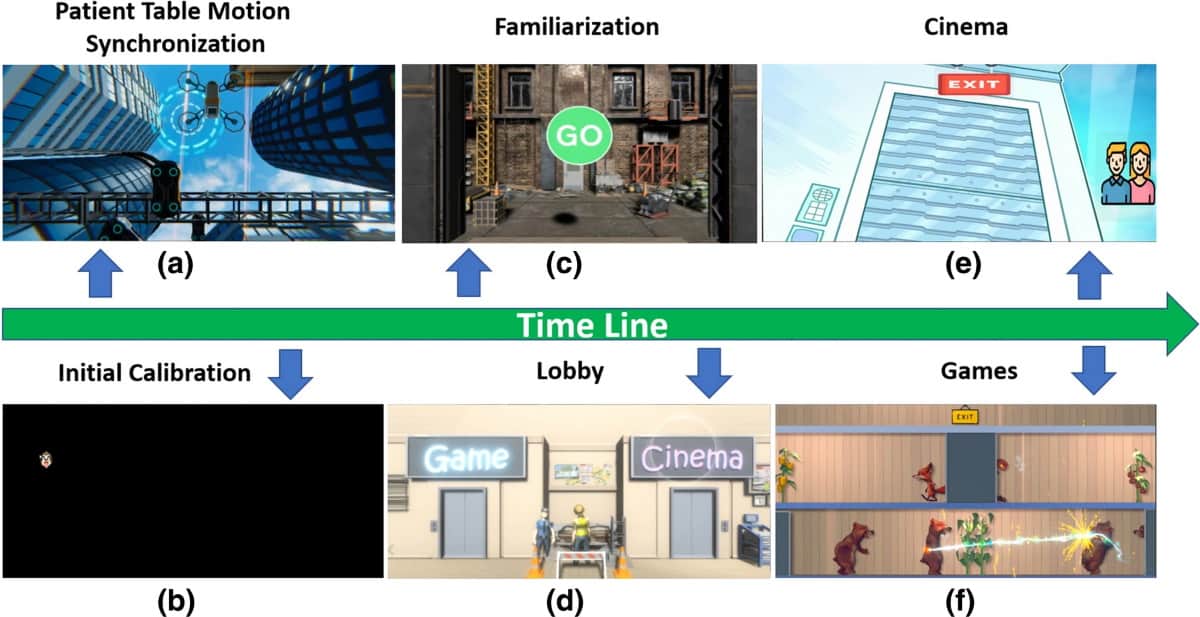
The bore of a magnetic resonance imaging (MRI) machine can be intimidating. The claustrophobic atmosphere, paired with knocking sounds that are sometimes louder than an aircraft flyover, can frighten even those comfortable with medical procedures. Children are especially susceptible to these fears, and as a result, MR scanning failure rates can be as high as 50% in young children.
MR technicians employ many simple methods to distract patients during imaging, including audiovisual systems, which they can also use to stimulate brain activity for functional MRI scanning. However, these techniques fail to remove the sensation of entering the MRI bore or assuage the jarring sensations that arise during its function. A research team centred at King’s College London envisioned a technology that would immerse patients in a game environment, distracting them and even replacing the sensations of being inside an MRI machine. The team, led by MRI specialists Kun Qian, Tomoki Arichi and Jo Hajnal, published the study findings in Scientific Reports.
The group investigated a virtual reality (VR) system that replaces the visual scene seen by a patient with immersive and tailored content, in an attempt to alleviate claustrophobia and allow more effective scanning of vulnerable groups like children. The system consists of a 3D-printed headset, a projector and multiple MRI-compatible cameras used to record the patient’s eye movements. The cameras allow the subject to control a VR environment using gaze tracking.

The gaze tracking system acts as the crux of the VR system, as it allows immersive control of the environment without bodily movement. First, the cameras obtain images of the patient’s eyes and surrounding areas. A computer then identifies the coordinates of the eye corners and pupils on these images and feeds this information into a progressive interaction interface. The patient then calibrates the system by gazing at dots on the screen. Their gaze coordinates at these times are fed into a regression model, which is constantly updated, improving robustness as they interact with the scene.
Participants reported more attention diversion when playing the video game than they did while watching a film, and no subjects required selection support from carers while exploring the system.
The researchers note that maintaining congruence with external physical stimuli was especially important to the subject’s immersion experience. Therefore, in addition to standard audio-visual stimuli from the VR system, the system integrated external stimuli into its storyline and function. For example, the system integrates the loud knocking and vibration of the MRI scanner by introducing construction characters into the scene, whose tools would be likely to cause said disturbances. If the subject gazes at these characters, they apologize for causing the disruption.
Further, to fully immerse the user in the virtual environment from the start, the system synchronizes the environment with the movement of the patient table sliding into the bore. In this way, subjects of the study noted that they were left without the impression of even having entered the scanner bore.
This technology demonstrates the potential to act as an immersive, engaging escape for patients requiring MRI scans. The researchers call for more in-depth testing of the VR system, especially for integration of full MRI exams and systematic studies with children.



